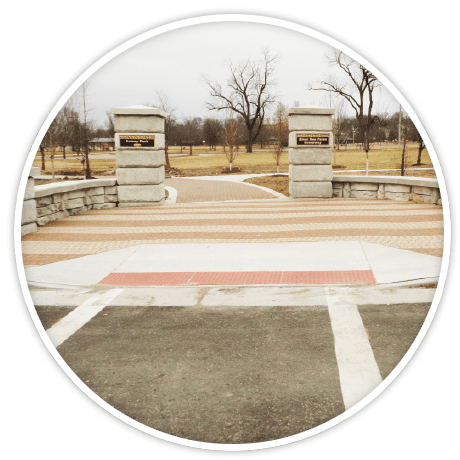Gateways celebrate the greenway, welcoming users and helping to brand the greenway experience.
 Gateways also distinguish greenways from other sidewalks and paved areas, and can serve as a visual deterrent to prevent vehicles from accessing the trail. Gateways should be considered when connecting major communities, schools and other civic amenities like parks.
Gateways also distinguish greenways from other sidewalks and paved areas, and can serve as a visual deterrent to prevent vehicles from accessing the trail. Gateways should be considered when connecting major communities, schools and other civic amenities like parks.
- The below layout is meant to be suggestive and reflective of gateways that have be previously incorporated into parts of the greenway system. However, gateways are important areas to celebrate the uniqueness of each greenway. Designers should use these areas to incorporate materials already in use along a given greenway.
- Though suggestive, the scale of the gateway and the relationship amongst the trail headers, walls and gateway pavement should be noted and incorporated into each unique design.
- Incorporate columns, seating walls, special pavement, etc. Walls should provide opportunities for seating in lieu of freestanding benches.
- Use retractable bollards at gateway points in situations where there is a concern of vehicular access.
- Use this at intersection nodes, park entry points, and areas of significance.
- Consider integrating raised planting beds into seatwalls.
- Consideration for signage should be given to help with wayfinding and greenway identity.
- Walls provide good opportunities for environmental graphics and/ or signage as part of greenway branding. Please note that it is recommended to do engraving into the stone, rather than attaching plaques, as shown in the image, as those can be damaged or stolen.
Recommended Layout

COMPONENTS: Click below for more information on each component.
1) Primary Trail Surfacing – Concrete
2) Seat Walls
3) Primary Trail Surfacing – Asphalt (Concrete Header Optional)
